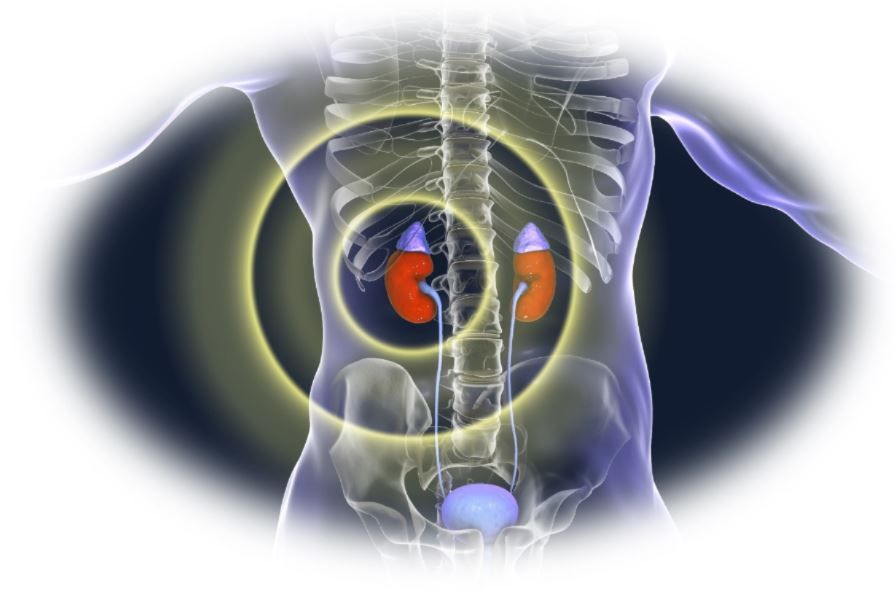- Clinical Technology
- Adult Immunization
- Hepatology
- Pediatric Immunization
- Screening
- Psychiatry
- Allergy
- Women's Health
- Cardiology
- Pediatrics
- Dermatology
- Endocrinology
- Pain Management
- Gastroenterology
- Infectious Disease
- Obesity Medicine
- Rheumatology
- Nephrology
- Neurology
- Pulmonology
6 Questions on Chronic Kidney Disease: The Basics
Primary care providers are often first to detect chronic kidney disease and essential to help prevent complications. Take our short test on CKD basics.

In an October 1 review published in JAMA,1 Teresa K Chen, MD, and colleagues point to primary care providers as the frontline for screening, diagnosis, and management of patients with chronic kidney disease (CKD). Primary care clinicians are a key to help prevent CKD-associated cardiovascular and end-stage kidney disease, and mortality.
Find out what you know about CKD screening, staging, treatment, and referral with 6 questions based on the review.
1. What is the lifetime risk in the United States of developing CKD?A. 6.5%
B. 10%
C. 38.5%
D. 50%
E. >50%
Please click here for answer and next question.
(image:©Kateryna_Kon/stock.adobe.com)
Answer: E. More than 50%. At one time, an authoritative published US lifetime risk estimate for CKD was 38.5%; however, that was probably too low, based on updated estimates published in 2013.2 That study estimated at 59.1% the overall lifetime risk of developing CKD stage 3 or higher (ie, eGFR, <60 mL/min/1.73 m²). For perspective, that is lower than the lifetime risk of hypertension, but higher than what has been reported for diabetes, coronary heart disease, and invasive cancers.
2. Once a diagnosis of CKD has been made, what is the preferred method of measuring eGFR?A. Direct measurement of plasma iohexol clearance
B. Direct measurement of total plasma iothalamate clearance
C. eGFR based on the CKD-EPI 2009 creatinine equation
D. eGFR based on the CKD-EPI 2012 creatinine-cystatin C equation
Please click here for answer and next question.
Answer: C. Estimated GFR based on the CKD-EPI 2009 creatinine equation. While clearance of iohexol or iothalamate can be used, the need to directly measure GFR has generally been replaced by eGFR based on filtration markers.1 Clinical laboratories most commonly use creatinine as the filtration marker, while the preferred estimating equation in the US and elsewhere is the CKD-EPI 2009 creatinine equation. If greater precision is warranted, cystatin C can be used along with creatinine in the CKD-EPI 2012 creatinine-cystatin C equation.1
3. When staging CKD, albuminuria ideally should be quantified by:A. Urine albumin-to-creatinine ratio (ACR)
B. Urine protein-to-creatinine ratio
C. Urine protein electrophoresis
D. Imaging by kidney ultrasound
Please click here for answer and next question.
Answer: A. Urine albumin-to-creatinine ratio. Use of urine ACR is preferable to urine protein-to-creatinine ratio in the staging of CKD.1 That’s because ACRs are more often standardized and are more precise when levels of albuminuria are low; moreover, some urine proteins are present in normal physiology and may even have beneficial functions (eg, uromodulin, which may protect against urinary tract infection). When using ACR, a first morning sample or 24-hour collection can be taken for maximum precision, though random samples may also be acceptable for initial screening.1
4. Since most patients with CKD are asymptomatic, clinical practice guidelines generally recommend a screening strategy that is:A. Risk-based
B. Population-wide
Please click here for answer and next question.
Answer: A. Risk-based. Screening can be important in the early detection of disease among patients with CKD, who are often asymptomatic. However, there are no randomized clinical trial data to demonstrate that clinical outcomes can be improved by screening asymptomatic patients.1 Most clinical practice guidelines suggest a risk-based screening approach in older patients (eg, age ≥60 years) and/or in those with risk factors such as hypertension or diabetes.
5. Which of the following common treatments for hypertension should be avoided in a patient with hypertension and CKD?A. Angiotensin-converting enzyme inhibitors (ACE-I)
B. Angiotensin II receptor blockers (ARB)
C. ACE-I plus ARB
D. Aldosterone receptor antagonists
Please click here for answer and last question.
Answer: C. ACE-I plus ARB. Given the potential risks of hyperkalemia and acute kidney injury with the combination, dual therapy with an ACE-I and ARB is typically discouraged; however, monotherapy with one agent from one class or the other may be useful in many adults with hypertension and CKD.1 An aldosterone receptor antagonist might be warranted in patients with albuminuria, resistant hypertension, or heart failure. Multiple expert-authored guidelines are available (including the Eighth Joint National Committee [JNC 8] evidence-based guideline) that provide a roadmap to guide choice of antihypertensive agent in patients with CKD.
6. An eGFR below what level (expressed in mL/min/1.73 m2) should prompt referral to a nephrologist?A. 60
B. 50
C. 40
D. 30
Answer: 30 mL/min/1.732. Prompt referral to a nephrologist is warranted for patients with albuminuria of ≤300 mg per 24 hours, a rapid decline in eGFR, or eGFR <30 mL/min/1.73m2per guidelines from the Kidney Disease: Improving Global Outcomes (KDIGO) organization. Other important indications for referral include (among others):
• Acute kidney injury
• Identification of hereditary kidney disease
• Recurrent or extensive kidney stones
• CKD plus uncontrolled hypertension despite at least 4 medications
Stay in touch with Patient Care® Online:
→ Subscribe to ourNewsletter → Like us on Facebook → Follow us on Twitter → Write or Blog for Patient Care® Online→ Follow us on LinkedIn
